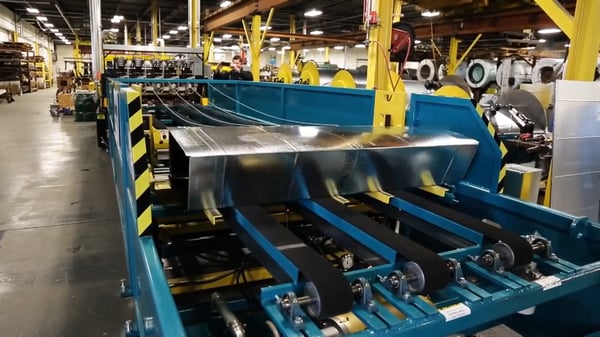Your coil line is the key to your rectangular duct operation's productivity, meaning you can only be as productive as your machines. Whether you're starting a new operation or looking into investing in newer machines, efficiency should be one of your top priorities. When choosing a coil line (or other fabrication machinery), it's important to research and compare the features of all the options you're looking at because only the most efficient machines will provide you with the best value while actually increasing your shop's profitability. In this post, we'll explain what features to look for when choosing a coil line to improve rectangular duct fabrication efficiency.

Features of an Efficient Coil Line
- An economical footprint. The less space the coil line takes up on your production floor, the more room you have for additional machinery to help economically produce more volume of product especially when it comes to just in time deliveries.
- High feed rate and belt speeds. The faster your machine can process and produce L- section and full wrap duct, the more product you can create in a shorter amount of time. In general, faster machines mean higher production rates that can be accomplished in the same 8-hour day, boosting efficiency levels in the process.
- The ability to accept full downloads from the CAM operator. Connectivity with your CAM software provides greater output with less input and less chance of human error.
- Automated operation to further reduce human error. When fewer mistakes are made, your coil line can run continuously without interruption, and your techs will not have to worry about running duplicate product to replace defective pieces. Producing quality deliverables will reduce the installation time for the onsite installation process.
While other features may be important depending on the setup of your unique operation, these elements are critical to creating a more efficient rectangular duct fabrication process.

